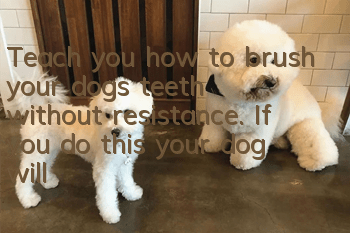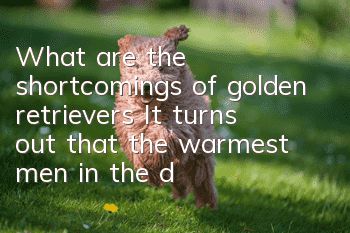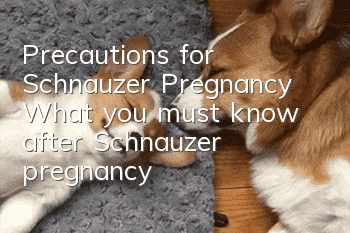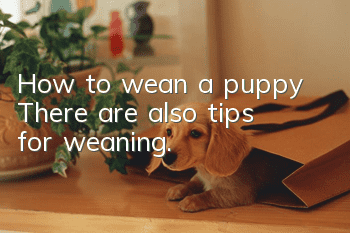Teach you how to brush your dog's teeth without resistance. If you do this, your dog will lie down and let you brush its teeth.

First let the dog get used to having his teeth brushed
Let the dog get used to having his teeth touched
Generally, dogs are not used to having their teeth touched, especially adult dogs. For them, touching the muzzle or teeth is a potential threat, so if you want to brush its teeth, you must first disarm it. Choose a time when your dog is relaxed, such as when he is lying down and resting. Start by stroking his mouth, and gradually transition to being able to lift his lips, and then to being able to touch his teeth. Every time you make an action, don't force it if the dog resists. If it accepts it at any time, immediately praise it, pet it, or reward it with small snacks to let it know that this action is not only harmless but also beneficial. Even if your dog doesn't resist, don't rush to brush his teeth. Spend one to two weeks touching his teeth frequently to solidify his trust in this touch. Let the dog become familiar with the taste of toothpaste
Be sure to choose toothpaste specially designed for dogs. Human toothpaste contains ingredients that cannot be digested or are even toxic to dogs, but toothpaste for dogs is not only Eat them, and good toothpaste will taste like meat or milk. Dogs will love them like snacks, and naturally they won’t resist brushing their teeth. Apply a little toothpaste on your index finger. Don't rush to rub your dog's teeth. Let him smell and lick it naturally. If he likes it, give him some more to make him feel that it is as delicious and harmless as snacks. East. I personally recommend this chicken-flavored toothpaste from Vic, France. It uses a dual-enzyme formula that can effectively fight bacteria that cause diseases and bad breath problems. Because it is chicken-flavored, the dog will not resist at all and will naturally fall in love with brushing. Let the dog get familiar with the toothbrush
Whether you use a long-handled toothbrush or a finger toothbrush, you must let it Dogs have a familiarization process. Apply a little toothpaste that your dog likes on the toothbrush, and then let him sniff, lick or even bite naturally so that he can get used to the feeling of the bristles rubbing against the teeth. Just like touching your teeth, the process of getting familiar with the toothbrush and toothpaste also takes a while. Don't rush to start brushing when the dog is still resistant and fearful, otherwise it may resist brushing its teeth for the rest of its life. Get familiar with the feeling of brushing
Use a toothbrush or finger cot to try to gently brush the front teeth, such as the large canine teeth, so that the dog can get used to the brushing action and can be rewarded with snacks. Officially start brushing teeth
Lift the dog's lips and brush the outside of the dog's front teeth starting from the side. You can rotate the brush or brush back and forth, but be sure to be gentle. Teeth cannot be whitened in a day. Too much force will cause the dog to become white. If your gums tingle or bleed, you won’t be allowed to brush them.. Focus on brushing the outer sides of your teeth, and finish brushing one side before brushing the other. During this process, you should constantly praise the dog. At the beginning, you can reward it with snacks.
Notes on brushing your teeth
1. Don’t be impatient at the beginning. Don’t expect to brush all the teeth at once. Start with a few teeth and slowly increase the area you brush. You can stop and let the dog rest. 2. Don’t brush your teeth for too long each time. No matter how well-behaved your dog is, his patience is limited, so don’t brush for too long at a time. 3. Choose a time when your dog is most relaxed to brush your teeth. Do not brush your teeth right after your dog has played or eaten. It is best to wait until your dog has calmed down, such as when he is lying on his den. This is when he is most relaxed and has the lowest resistance. , best for brushing your teeth. 4. Give enough rewards during the adaptation stage and when you first start brushing your teeth. You can reward it with snacks, or you can pat it on the head and praise it. In short, you can do whatever it likes. Random articles
- How do dogs tell age? How to tell a dog’s age?
- What are the causes of pyometra in dogs? What are the dangers of pyometra in dogs?
- What medicine should dogs take for urinary tract infection? Key things you need to know about dog urinary tract infection!
- How to remove dental calculus in dogs The most effective way to remove dental calculus
- Why do dogs love chewing bones? It turns out that dogs chew bones not just for eating
- What are the advantages of golden retriever? You will fall in love with it after reading it
- What are the shortcomings of Bago? People with light sleep should not keep it.
- What are the advantages of Cane Corso dogs? Only those who have raised them know
- Does a Golden Retriever have bloody stools? There are many reasons for Golden Retrievers to have bloody stools!
- Golden Retriever bathing precautions: owners must pay attention to these aspects



